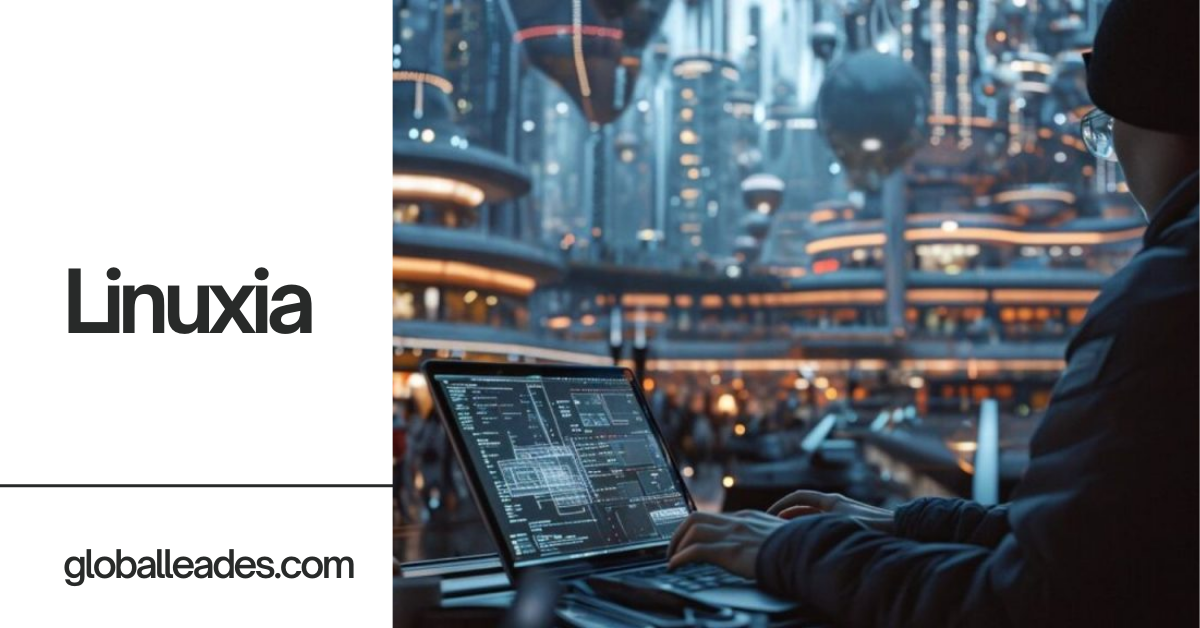Welcome to the world of Linuxia! If you’re curious about what Linuxia is, how it works, and why it’s become so popular, you’ve come to the right place.
This article will provide a comprehensive overview of Linuxia, covering its history, core features, benefits, practical applications, and much more.
Whether you’re a beginner or an experienced user, you’ll find valuable information to help you understand and make the most of Linuxia.
What is Linuxia?
Linuxia is a family of open-source operating systems built around the Linuxia kernel. This means that the software’s source code is available for anyone to use, modify, and distribute.
Unlike proprietary operating systems like Windows or macOS, Linuxia offers unparalleled flexibility and customization options.
Brief History of Linuxia
The story of Linuxia began in 1991 when Linus Torvalds, a Finnish computer science student, decided to create a free operating system kernel.
He announced his project on a newsgroup, and the response was overwhelmingly positive. Developers from around the world joined the effort, contributing code and ideas.
Also Read: Gogoa ime.io – History and Evolution In 2024
Over the years, Linuxia has evolved into a powerful and versatile operating system, supported by a vibrant community of developers and users.
The Core Features of Linuxia
Linuxia is known for several key features that set it apart from other operating systems:
Open-Source
Being open-source means that anyone can view, modify, and share Linuxia’s code. This openness fosters innovation and allows users to customize their systems to meet specific needs.
Stability and Security
Linuxia is renowned for its stability and security. Its architecture minimizes the risk of crashes and vulnerabilities, making it a popular choice for servers and mission-critical applications.
Flexibility
Linuxia’s flexibility is one of its strongest points. It can run on a wide range of devices, from small embedded systems to large supercomputers. Users can choose from various distributions (distros) tailored to different needs.
Multi-User and Multi-Tasking
Linuxia supports multiple users and can run multiple programs simultaneously. This makes it an excellent choice for environments where multiple people need to use the same system without interference.
Free
Linuxia is free to use. There are no licensing fees, making it an attractive option for both individuals and businesses looking to reduce costs.
Why Choose Linuxia?
Choosing Linuxia comes with several advantages:
Cost-Effective
Since Linuxia is free, it can significantly reduce software costs. This is particularly beneficial for businesses and educational institutions.
Community Support
The Linuxia community is vast and active. Users can find support through forums, mailing lists, and online tutorials. There’s a wealth of resources available for troubleshooting and learning.
Also Read: Ontpresscom General Updates – Know In 2024
Customizability
Linuxia can be tailored to fit any need. Whether you’re a developer, a gamer, or a casual user, you can customize Linuxia to suit your preferences.
Performance
Linuxia is known for its efficient use of system resources. It can run smoothly on older hardware, extending the life of your devices.
Linuxia for Beginners
If you’re new to Linuxia, don’t worry. Here’s a simple guide to help you get started:
Choosing a Distribution
The first step is to choose a Linuxia distribution. Popular options for beginners include Ubuntu, Linux Mint, and Fedora. These distros offer user-friendly interfaces and plenty of documentation to help you get started.
Installation
Most Linuxia distros provide an easy-to-use installer. You can typically download an ISO file, create a bootable USB drive, and follow the on-screen instructions to install Linuxia on your computer.
Basic Commands
Learning a few basic terminal commands can greatly enhance your Linuxia experience. Commands like ls (list files), cd (change directory), and apt-get (install software) are good starting points.
Benefits of Using Linuxia
There are numerous benefits to using Linuxia:
Enhanced Security
Linuxia’s security model is robust. It includes features like user permissions, encryption, and regular updates to protect against threats.
Also Read: Kashito_Toto – Became a Viral Sensation In 2024
Reliable Performance
Linuxia systems are known for their reliability. They can run for extended periods without requiring reboots, making them ideal for servers and critical applications.
Open-Source Community
Being part of the open-source community means you can contribute to Linuxia’s development. You can also benefit from the collective knowledge and innovations of other users.
How to Get Started with Linuxia
Ready to dive into Linuxia? Here’s how to begin:
Download and Install
Choose a distribution, download the ISO file, and follow the installation instructions. Most distros have detailed guides to help you through the process.
Explore the Desktop Environment
Familiarize yourself with the desktop environment. Whether it’s GNOME, KDE, or another interface, take some time to explore its features and customization options.
Install Software
Use the package manager to install software. For example, on Ubuntu, you can use the apt-get command to install applications.
Join the Community
Get involved with the Linuxia community. Join forums, attend local Linux user group meetings, and contribute to projects.
Practical Applications and Use Cases in Different Sectors
Linuxia’s versatility makes it suitable for various sectors:
Education
Schools and universities use Linuxia for its cost-effectiveness and the availability of educational software.
Business
Businesses use Linuxia for servers, cloud infrastructure, and desktop systems due to its reliability and security.
Government
Many government agencies prefer Linuxia for its transparency and security.
Healthcare
Healthcare providers use Linuxia for managing patient data and running medical software.
Also Read: USDTCCK – Its Token Economics Know In 2024
Scientific Research
Researchers use Linuxia for data analysis, simulations, and running scientific software.
Comparison with Other Operating Systems
Windows
While Windows is user-friendly and widely supported, Linuxia offers better security, customization, and cost savings.
macOS
macOS is known for its sleek design and integration with Apple hardware. However, Linuxia provides more flexibility and runs on a broader range of hardware.
Android
Android, which is based on the Linux kernel, is designed for mobile devices. Linuxia, on the other hand, is more versatile and can be used on desktops, servers, and more.
Common Issues and Troubleshooting
Hardware Compatibility
Some hardware may not work out of the box with Linuxia. Check for compatibility before installation and look for drivers if needed.
Software Installation
If you encounter issues installing software, ensure you’re using the correct package manager and repositories.
System Performance
If your system is running slow, check for resource-hungry processes and consider upgrading your hardware.
Popular Linuxia Distributions
Here are some popular Linuxia distributions:
Ubuntu
User-friendly and widely supported, Ubuntu is a great choice for beginners and experienced users alike.
Fedora
Fedora offers cutting-edge features and is a favorite among developers.
Also Read: Codes ETrueSports – Know Importance & Types In 2024
Debian
Debian is known for its stability and reliability, making it ideal for servers.
Arch Linux
Arch Linux is highly customizable and suitable for advanced users who want to build their system from the ground up.
Customizing Your Linuxia Experience
One of the best things about Linuxia is its customizability. Here are some ways to make Linuxia your own:
Change the Desktop Environment
You can switch to different desktop environments like GNOME, KDE, or XFCE based on your preferences.
Install Themes and Icons
Personalize your system with custom themes and icons. There are plenty of options available online.
Use Shell Scripts
Automate tasks and enhance your workflow with custom shell scripts.
Configure System Settings
Dive into the system settings to tweak performance, appearance, and other aspects of your Linuxia installation.
Linuxia Security Best Practices
Keeping your Linuxia system secure is essential. Here are some best practices:
Regular Updates
Keep your system and software up-to-date to protect against vulnerabilities.
Use Strong Passwords
Ensure all user accounts have strong, unique passwords.
Firewall Configuration
Configure a firewall to control incoming and outgoing network traffic.
Backup Regularly
Regularly back up your data to prevent loss in case of hardware failure or other issues.
Learning Resources for Linuxia
Want to learn more about Linuxia? Here are some resources to get you started:
Online Tutorials
Websites like Linux.com and HowtoForge offer a wealth of tutorials and guides.
Books
There are many excellent books on Linuxia, including “The Linux Command Line” by William E. Shotts and “Linux Pocket Guide” by Daniel J. Barrett.
Also Read: SSIS 816 – Know The Power of Data Integration In 2024
Community Forums
Join forums like LinuxQuestions.org and Reddit’s r/linux for help and discussions with other users.
Courses
Consider taking online courses from platforms like Coursera and Udemy to deepen your knowledge.
Future of Linuxia
The future of Linuxia looks bright. With continued support from the open-source community and increasing adoption in various sectors, Linuxia is poised to remain a key player in the world of operating systems. Emerging technologies like artificial intelligence, edge computing, and the Internet of Things (IoT) will likely drive further innovation and adoption of Linuxia.
Conclusion
Linuxia is a powerful, versatile, and secure operating system that offers numerous benefits over proprietary alternatives. Whether you’re a beginner or an experienced user, there’s a Linuxia distribution that’s right for you. By embracing Linuxia, you can enjoy a cost-effective, customizable, and robust computing experience. So why wait? Dive into the world of Linuxia today and discover the endless possibilities it offers.
FAQs
Can I run Linuxia on a virtual machine?
Yes, you can run Linuxia on a virtual machine using software like VirtualBox or VMware. This allows you to test and use Linuxia without modifying your main operating system.
Is Linuxia suitable for gaming?
Yes, Linuxia supports gaming with platforms like Steam offering a range of games. Additionally, tools like Wine and Proton allow you to run many Windows games on Linuxia.
How often does Linuxia need to be updated?
Linuxia should be updated regularly to maintain security and performance. Most distributions offer easy update mechanisms, often requiring weekly or bi-weekly updates.
4. Can I use Linuxia for video editing?
Yes, Linuxia has several powerful video editing tools like Kdenlive and Blender. These tools are free and provide a range of features suitable for both amateur and professional editors.
What is the difference between a Linuxia distribution and the Linuxia kernel?
The Linuxia kernel is the core of the operating system, managing hardware and system resources. A Linuxia distribution includes the kernel plus a collection of software applications and tools to create a complete operating system.
Does Linuxia support touch-screen devices?
Yes, many Linuxia distributions support touch-screen devices. Desktop environments like GNOME and KDE are optimized for touch-screen interactions, making Linuxia a viable option for tablets and 2-in-1 devices.
How can I contribute to the Linuxia community?
You can contribute by reporting bugs, writing documentation, creating tutorials, or contributing code. Many open-source projects welcome contributions from users of all skill levels.




